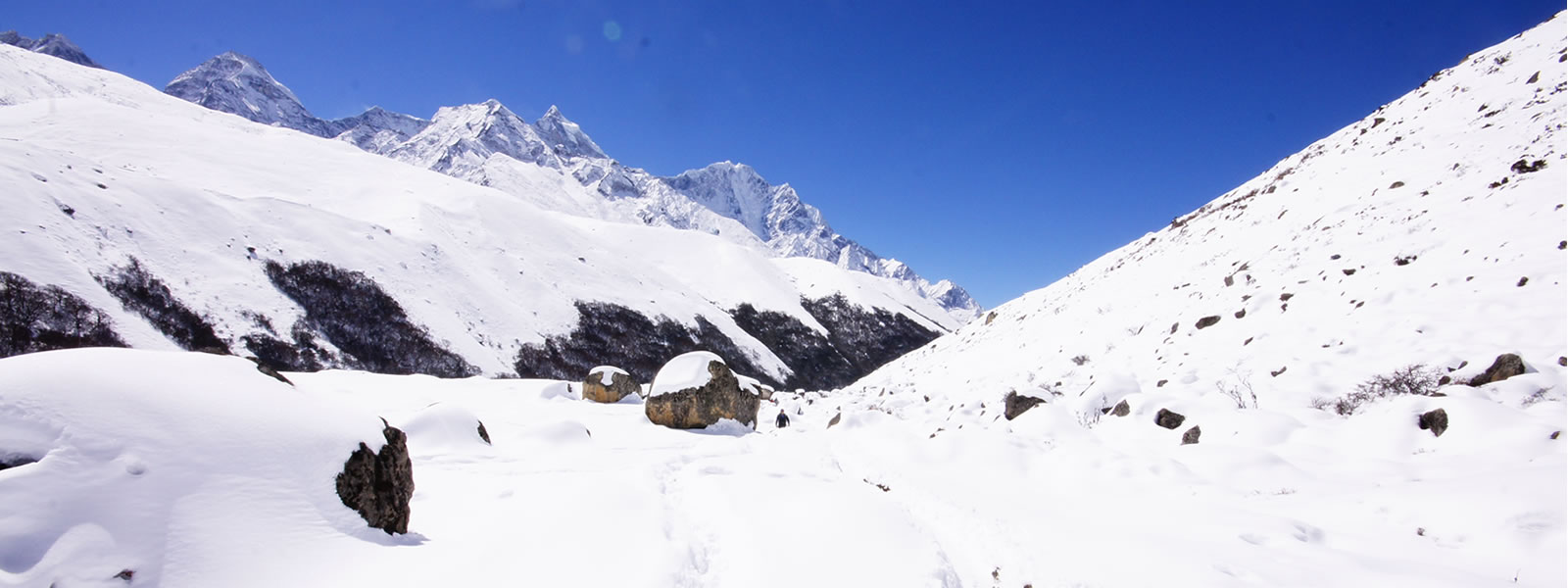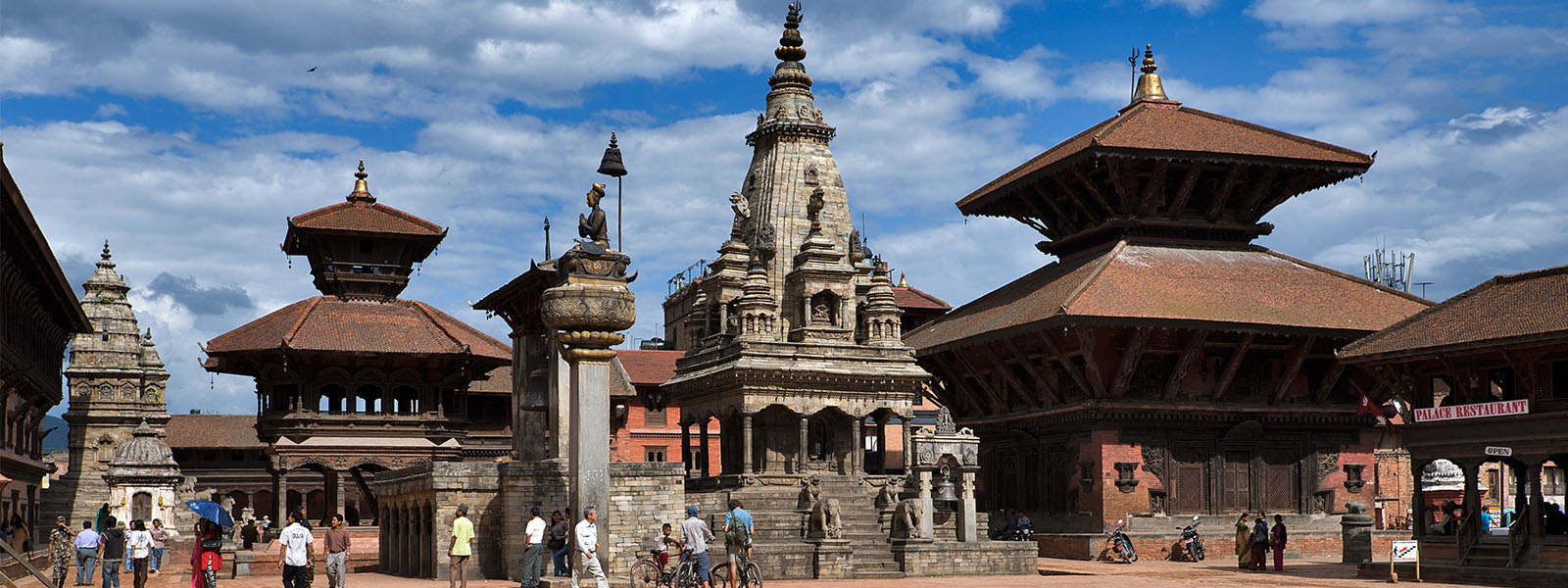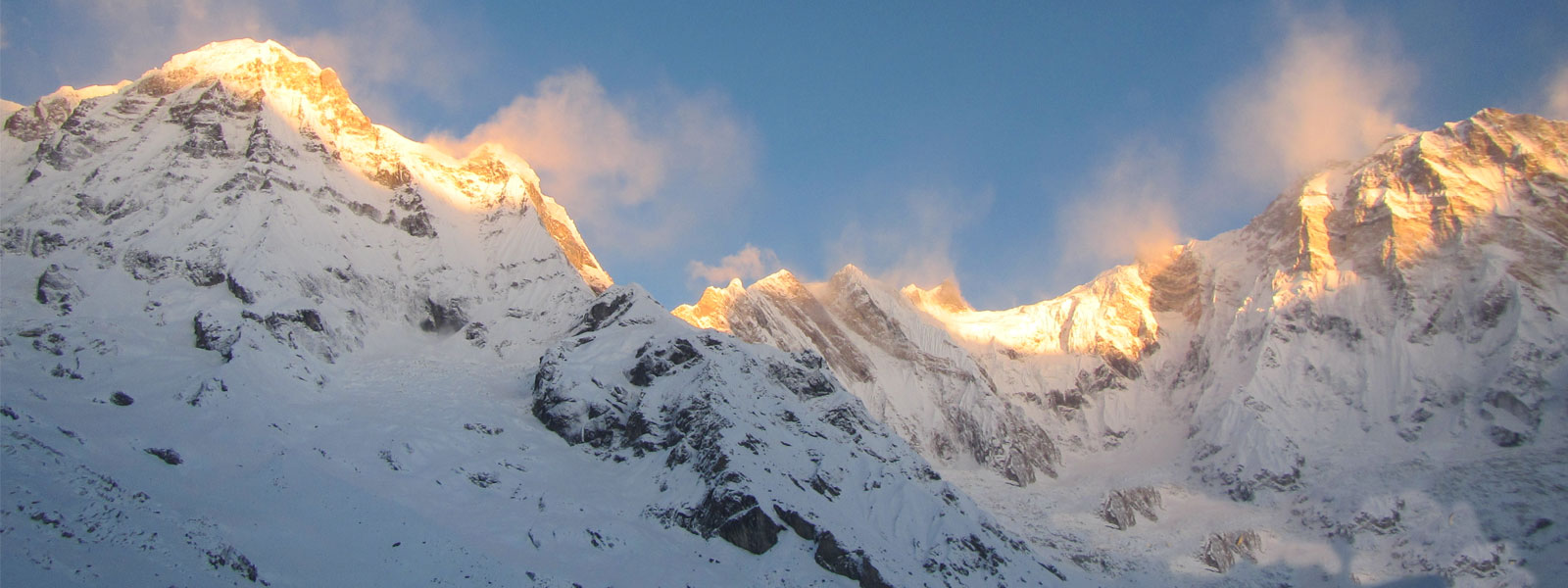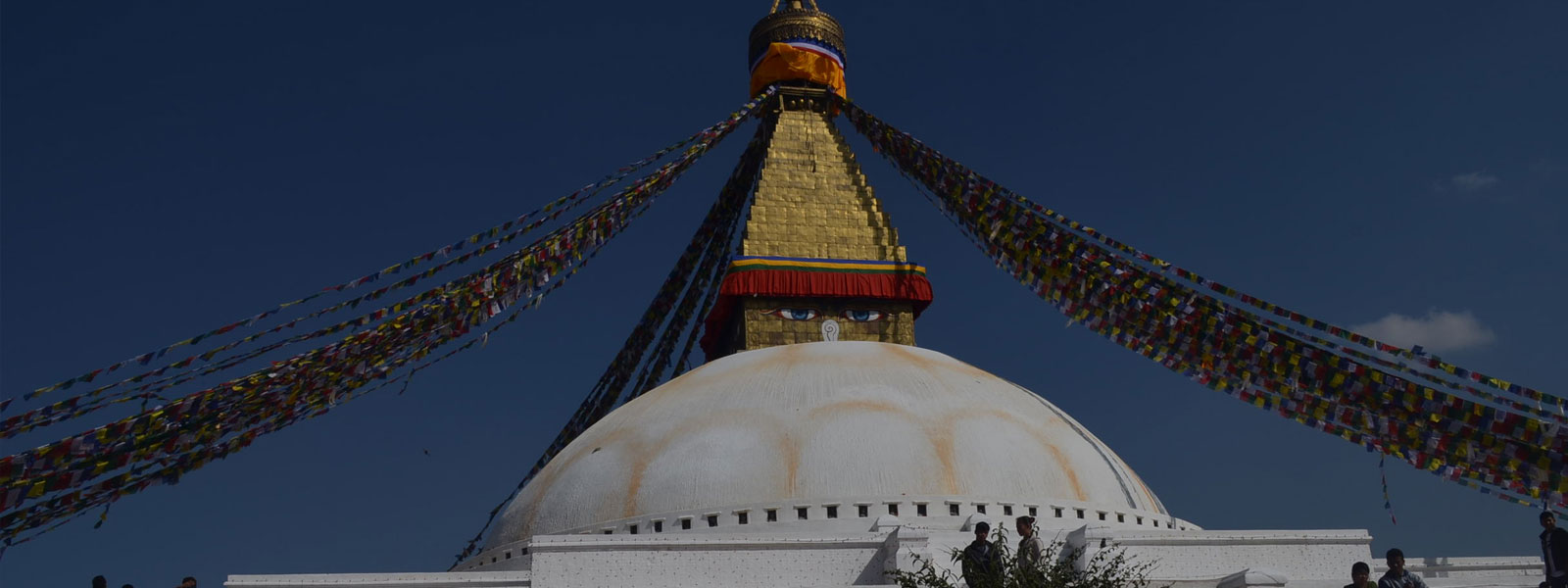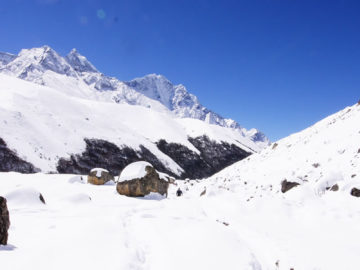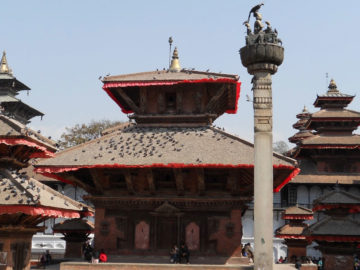Nepal
Nepal is a South Asian nation located along the lofty Himalayan ranges, surrounded by India on three sides with China to the north. With a population of around 30 million, Nepal is home to snow-capped peaks, mist-covered valleys, isolated communities, remote monasteries, culturally rich villages and a landscape full of adventurous activities. Famed for the tallest peak in the world, Mt. Everest (8848m), the fearsome Gurkha warriors, and the legendary mountaineering Sherpas, Nepal is also the home of diverse flora and fauna, containing a vast range of ecosystems in its landscape which spans altitudes from just 60m above sea level to the top of Everest within a range of around 150 Km. This geographical variation creates exceptionally diverse climatic conditions and biodiversity. From forests of peacocks, tigers and wild buffalo up to the hunting grounds of snow leopards, from the subtropical to the alpine and from fertile plains to lush hills and snowy rough terrain, Nepal has a lot to offer within a small area.
History
The oldest nation in the whole of South-Asia, tools found in Kathmandu indicate human inhabitation in the valley for at least eleven thousand years, and Nepal is mentioned in Hindu mythological and holy books. Several dynasties have ruled the nation including the Kirat rulers 2500 years ago, and the Lichhavi and Malla rulers that succeeded them. The Shah Dynasty ruled over a unified Nepal for around 250 years before the declaration of Nepal as a Democratic Republic state in 2008.
The beginnings of present-day Nepal were set in the 1700s when King Prithvi Narayan Shah of Gorkha set out to conquer adjoining kingdoms in bloody battle, most notably the Battle of Kirtipur in 1769, in which he conquered the Kathmandu valley. Gorkha domination reached its height when the king managed to extend his territory to the North Indian territories of Kumaon and Gadhwal in the west, Sikkim in the east up to the Teesta River, and Kangra and Himachal Pradesh across the Sutlej. Nepal’s territory was reduced after a war with the British (1815-1816), when the Sugauli Treaty was signed, but later four districts in the southern plain were gifted to Nepal by the British in exchange for aid from the Rana dynasty for suppressing rebellion. The sum of these areas form the current territory of Nepal.
Diversity of culture and religious heritages
A country of highly diverse and rich culture and religions, Nepal has a large number of distinctive communities (more than 100 ethnic groups) speaking around 93 languages and dialects. A rich history has left behind a legacy of architectural masterpieces, from the pagoda styled Hindu Temple of Pashupatinath and the Shikhara styled Krishna Temple to the Buddhist shrines of Boudhanath and Swayambhunath all coexisting in the Kathmandu valley. Seven monument zones in the Kathmandu valley are listed as World Heritage Sites by UNESCO.
Revered in both Hindu and Buddhist cultures, the Himalayas are believed to be a home of the deities by Hindus, with Nepal being the birthplace of Gautam Buddha, the founder of Buddhism the country is also a home to Christianity and the nature worshipping religion Shamanism.
Nicknamed the ‘Land of Festivals’ the Nepalese celebrate more than 50 major festivals each year. Worshipping the Living Goddess (Goddess Kumari) is a unique tradition that visitors can witness. Some festivals are celebrated in honour of relatives such as Matatirtha (for Mother), Gokarna Ausi (for Father), Guru Purnima (for teachers) and Gaijatra (for deceased family members) while the national festival Dashain celebrates the victory of good over evil. Besides these, Ghode Jatra, Tihar (the festival of lights), Rath Yatra (a chariot procession on Lord Krishna’s birthday), Rato Machhindranath, Teej (a fasting festival celebrated by Hindu women for marital bliss), Shiva Ratri (dedicated to Lord Shiva) Lhosar, Fagu Purnima (the festival of colour) are popular festivals, though these are only the highlights!
Mountaineering, Trekking and Adventure Sports
Nepal is a delight to adventure lovers from all around the world. Mountaineers arrive in this tiny nation to ascend the colossal Himalayas, returning with a sense of pride and achievement after conquering the mighty peaks. The lush hilly region in the middle of the nation along with the snowy and rocky terrain in the Himalayan region combine to form some of the world’s best trekking routes. The trails of Everest, Annapurna, Langtang, Manaslu, Helambu, Mustang and Dolpo are popular, but away from the main routes are many other equally captivating paths. The scenery is truly breathtaking with mixed forest, flower filled meadows, glaciers, rivers and spectacular mountainous panoramas throughout. Adventure paragliding, bungy jumping, ultralight flight, mountain flight, mountain biking, wave running, rock climbing, and jungle safaris are only some of the popular adventure activities in Nepal.
Coexistence of ancient and modern lifestyles
Besides boasting the political capital: Kathmandu city, Kathmandu Valley is also the cultural capital of Nepal with exotic and rich medieval cities preserving ancient architecture such as Durbar Square, Hindu temples and Buddhist monasteries, while also hosting festivals and celebrations that make the valley a lively cultural hub. Other cities in the valley are Bhaktapur and Patan, which contain masterpieces created during the golden years of Nepalese art and culture. The surrounding hill stations of Nagarkot and Kakani provide an awesome view of Nepal’s mountains. Pokhara, the scenic Lake City, is a favourite of adventure lovers and a starting point for the Annapurna trekking routes. Lumbini is the birthplace of Gautam Buddha, and the city of Janakpur in the southern plain is also of religious significance. The country’s natural heritage is also not neglected. With eight National Parks, four Wildlife Reserves and two conservation areas, Nepal is doing its part to conserve its natural heritage. A single visit is not enough for exploring every part of this captivating nation.
